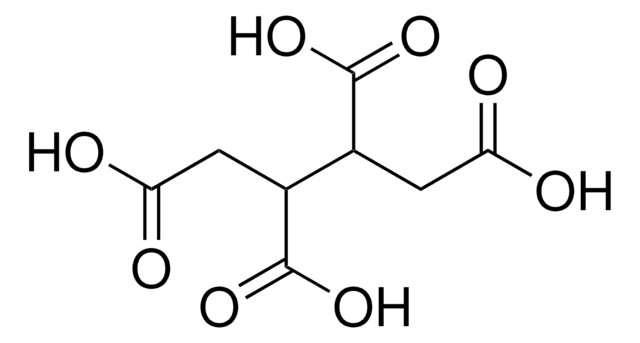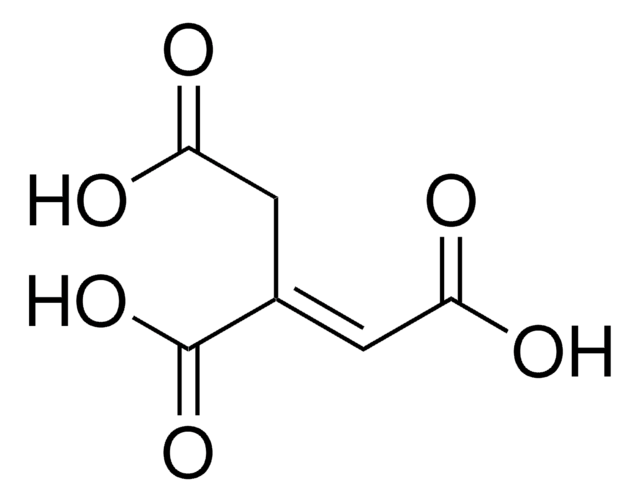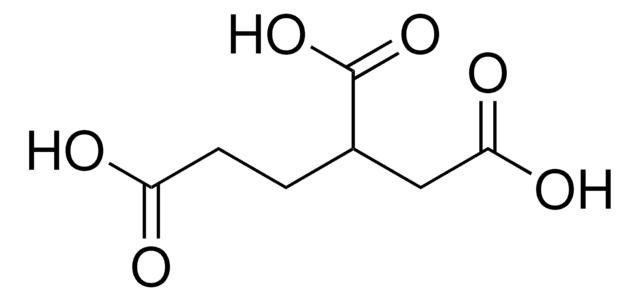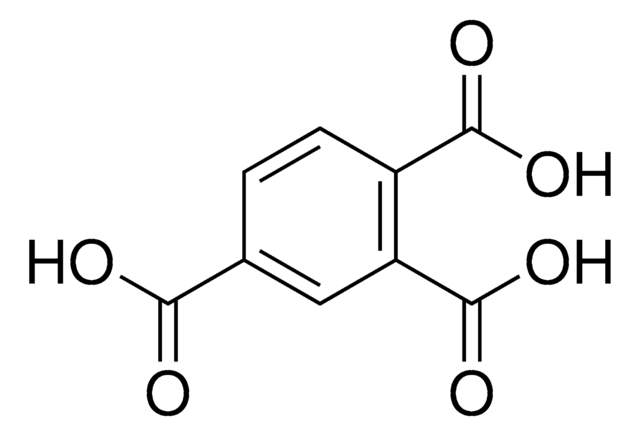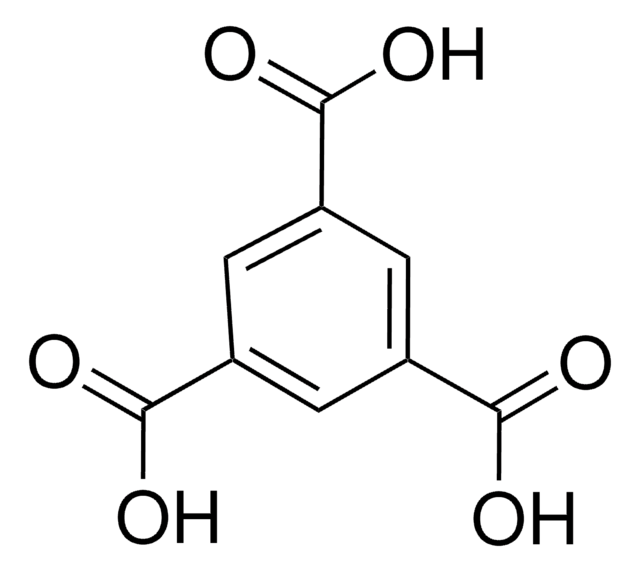T53503
Tricarballylic acid
99%
Sinónimos:
1,2,3-Propanetricarboxylic acid
About This Item
Productos recomendados
assay
99%
mp
156-161 °C (lit.)
SMILES string
OC(=O)CC(CC(O)=O)C(O)=O
InChI
1S/C6H8O6/c7-4(8)1-3(6(11)12)2-5(9)10/h3H,1-2H2,(H,7,8)(H,9,10)(H,11,12)
InChI key
KQTIIICEAUMSDG-UHFFFAOYSA-N
¿Está buscando productos similares? Visita Guía de comparación de productos
General description
Application
- Effect of organic acids on the solid-state polymorphic phase transformation of piracetam.: Examines the impact of tricarballylic acid and other organic acids on the polymorphic phase transformation of the drug piracetam, relevant for pharmaceutical formulations and drug stability studies (Fan F et al., 2023).
- Nanotubule inclusion in the channels formed by a six-fold interpenetrated, triperiodic framework.: Describes the synthesis of novel materials incorporating tricarballylic acid, which could have implications for polymer production and advanced material applications (Kusumoto S et al., 2023).
Storage Class
11 - Combustible Solids
wgk_germany
WGK 3
flash_point_f
Not applicable
flash_point_c
Not applicable
ppe
dust mask type N95 (US), Eyeshields, Gloves
Certificados de análisis (COA)
Busque Certificados de análisis (COA) introduciendo el número de lote del producto. Los números de lote se encuentran en la etiqueta del producto después de las palabras «Lot» o «Batch»
¿Ya tiene este producto?
Encuentre la documentación para los productos que ha comprado recientemente en la Biblioteca de documentos.
Nuestro equipo de científicos tiene experiencia en todas las áreas de investigación: Ciencias de la vida, Ciencia de los materiales, Síntesis química, Cromatografía, Analítica y muchas otras.
Póngase en contacto con el Servicio técnico